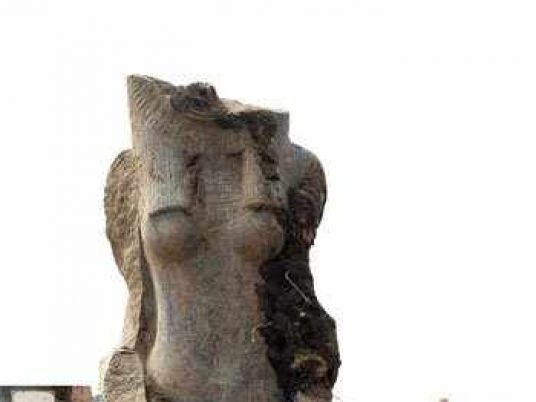
The Egyptian embassy in France has recovered a stolen ancient artefact that dates back to the 30th Dynasty (360-343 BC).
The sculputre, which was apparently stolen from the Sakkara archeological site in Egypt, was recovered from a French auction house after investigations and official representation from Egyptian diplomats.
The artefact is an 80 kg limestone slab with an encryption featuring the upper half of the goddess Sekhmet looking to the right and bearing a sun-disc above her head, in addition to a pillar with hieroglyphs symbolising King Nectanebo II, who was the third and last pharaoh of the 30th Dynasty.
In a statement published on Wednesday on Facebook, the Foreign Ministry clarified that the artefact was received after several official memoranda were directed to the French auction house Millon earlier this month.
Millon investigated the issue and confirmed the archeological aspect of the limestone frame with the help of an Egyptian archeological expert who works there, the ministry said.
The expert confirmed that the artefact belongs to the Sakkara archeological site, along with other artefacts that have been announced as stolen by the Egyptian Antiquities Ministry.
Furthermore, the artefact was circulated during the timeframe of the 1970 Convention on the Means of Prohibiting and Preventing the Illicit Import, Export and Transfer of Ownership of Cultural Property. Thus, the expert requested its return to Egypt.
Egypt retrieved around 300 ancient artefacts from France over 2015 and 2016 after France seized them from smugglers.
The Egyptian Embassy in Paris is currently working to finalise the procedures for the shipment of the artefact to Cairo, the Foreign Ministry said.




